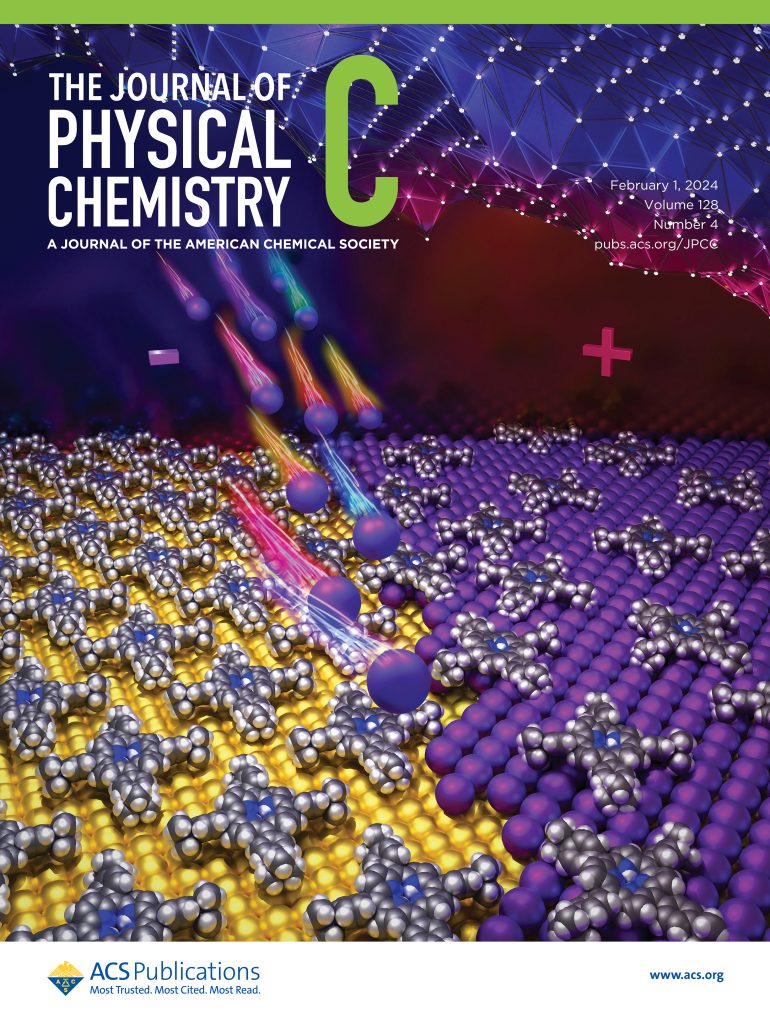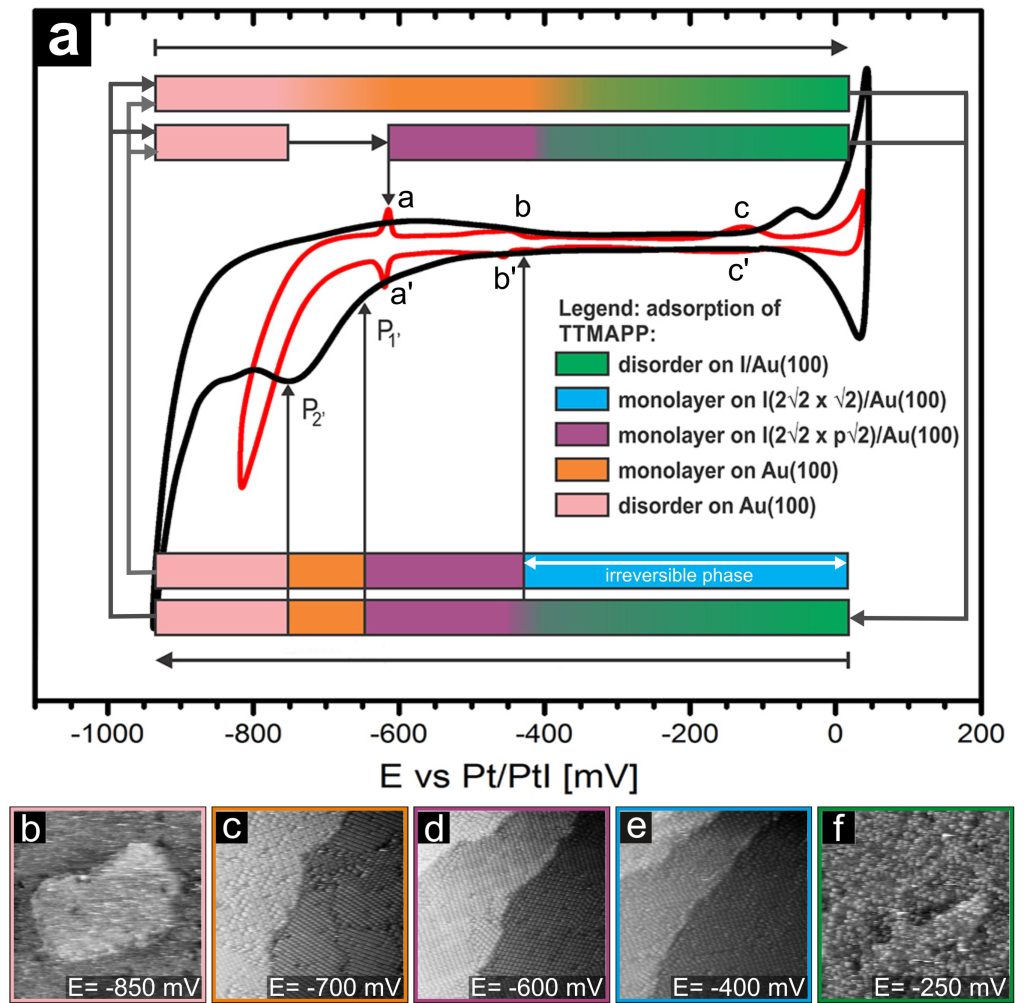Self-organisation at nanoscale
New perspectives in research on self-organisation of organic molecules at the solid/electrolyte interface

Research on self-organisation of supramolecular structures on electrode surfaces have a key meaning for the development of innovative nanomaterials and nanotechnologies. Controlled self-organisation of organic molecules on solid surfaces opens new possibilities of creating functional materials that may be applied in nanoelectronics, electrocatalysis, or cutting-edge light-activated sensors.
The paper Unveiling the Interplay between a Au(100) Electrode, Adsorbed TTMAPP Porphyrin Cations, and Iodide Anions: An EC-STM and CV Study, published in The Journal of Physical Chemistry C, authored by Tomasz Kosmala, Radosław Wasielewski, Marek Nowicki, and Klaus Wandelt, delivers pertinent observations on self-organisation of molecules of TTMAPP porphyrin on the surface of monocrystalline gold (Au(100)) in the presence of iodide anions.
Self-organisation of TTMAPP porphyrin molecules on an Au(100) electrode was studied with cyclic voltammetry (CV) and electrochemical scanning tunnelling microscope (EC-STM). As many as 11 different phases of long-range ordered TTMAPP molecules were found, whereby the electrode potential constituted the prime driving force of the observed phase transitions between structures. Moreover, the study results showed that TTMAPP molecules absorbed on a pure gold surface – (1 × 1)-Au(100) – block iodine adsorption, while adsorption on a iodide-modified gold surface hinders desorption of iodine from the surface. It was additionally demonstrated that readsorption of iodine on Au(100) surface coated with TTMAPP can be controlled with electrode potential scanning speed.
This paper not only casts a new light on the self-organisation of molecules on the surface, but also highlights the meaning of non-covalent interactions, such as electrostatic and van der Waals forces, in self-organisation processes at molecular level. This significant discovery opens new possibilities of surface structure manipulation with molecular precision, applicable in the field of nanomaterial technologies. It is worth noting that this study has been recognized by the editor and appeared on the cover of the journal’s February issue, which is an unequivocal recognition of its importance and innovation.

